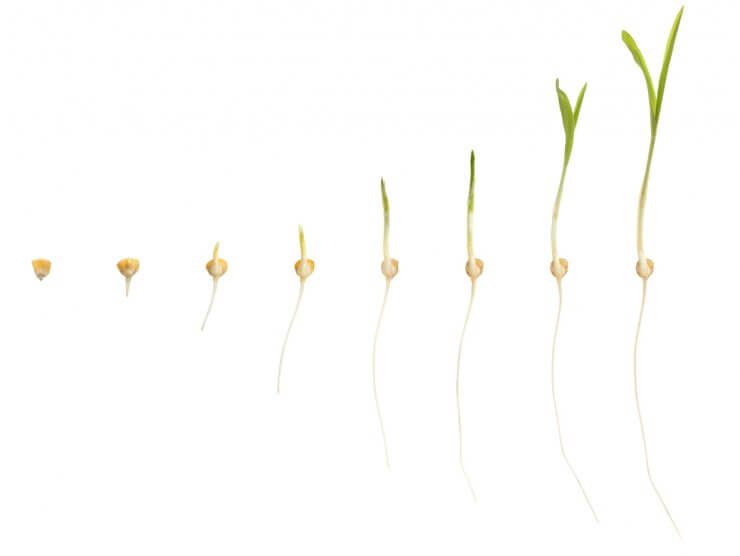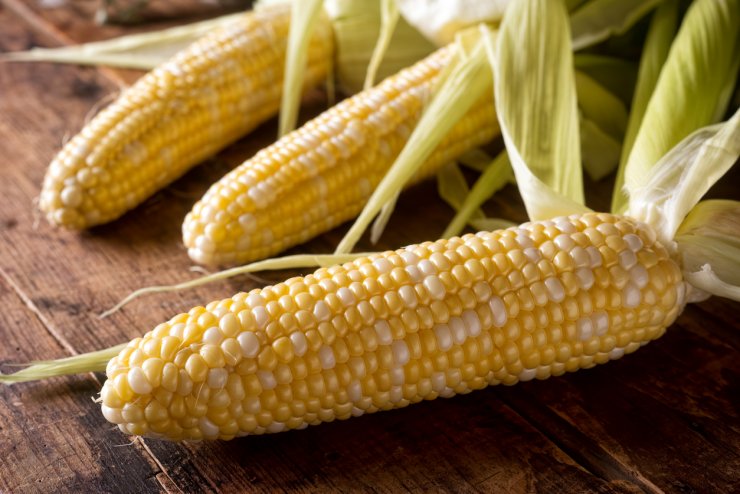
Growth stages of a young corn plant
Corn has something in common with bananas—and it’s not just the yellow color. Both plants are classified as monocots, because their embryos have only a single leaf or cotyledon in their seed. Other monocot plants include lilies and palm trees.
While there are many varieties of corn, popular varieties will give you some diversity in your harvest to help feed your kitchen with different corn for different recipes.
All corn falls into these scientific classifications:
- Kingdom: Plantae (plants)
- Order: Cyperales (flowering plants)
- Family: Poaceae (grass family)
- Genus: Zea L. (corn)
- Species: Zea mays L. (corn)
A Word About Corn Plant Cultivars

Sweet Corn of Table
For cooking and eating purposes, sweet corn is tops. Within that type, there are three cultivars you should be aware of: SU, SH2, and SE.
- SU, referred to as “sugary,” is the most common cultivar for home growing. It offers that old-time corn flavor and tolerates cooler temperatures better than the other types, but has a shorter shelf life once picked.
- SH2 is known as “supersweet” or “ultrasweet,” indicating that it’s, well, sweeter than other types. The SH stands for “shrunken.” This cultivar can be a little more challenging to grow, but it holds its flavor in the fridge for up to a week.
- SE, meaning “sugar extended,” tends to be very sweet, tender, and crisp. The kernels last longer on the plant after harvest, but it prefers warm weather, making it a little tricky to grow if you don’t have a long, hot growing period in your area. Once harvested, it lasts for up to a week in the refrigerator.
Corn plants will be labeled with their cultivar codes, so you can take that into consideration when choosing your varieties.
Have you ever grown any of these types of corn? Which varieties have you grown and how successful were you with your crop? Please share your tips for growing corn.


 Previous
Previous


I love growing sweetcorn.i usually grow Snowgold as a super sweet variety and this year u have the blue popping corn so I’m looking forward to making our own popcorn ????. Feed your corn as they are grose feeders and always grow in a block for pollination. Try growing 10-15 every two weeks so you will have a constant supply all summer and well into autumn. I’m in Australia so I get a long growing period.